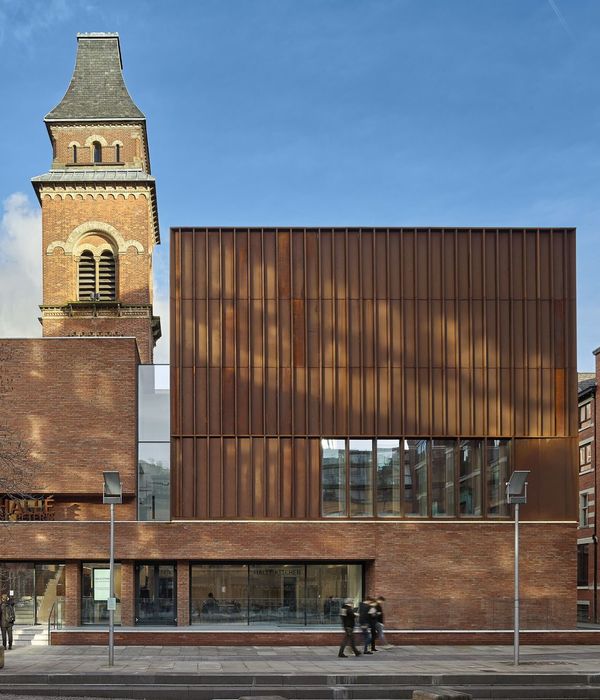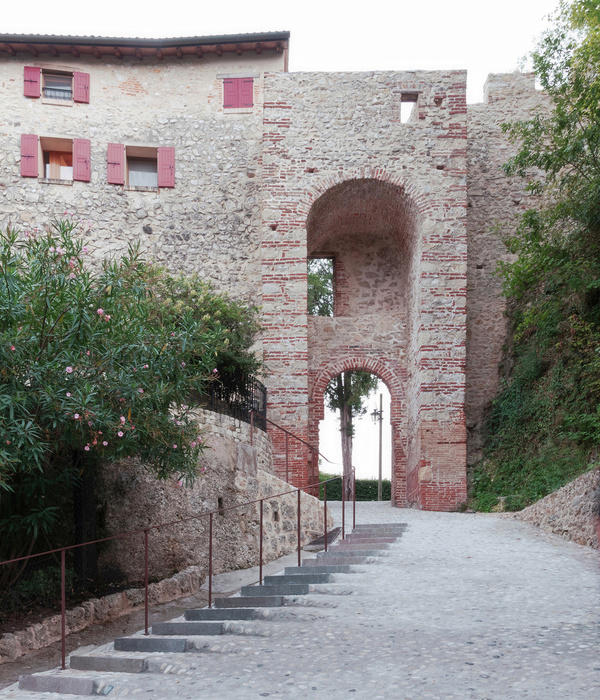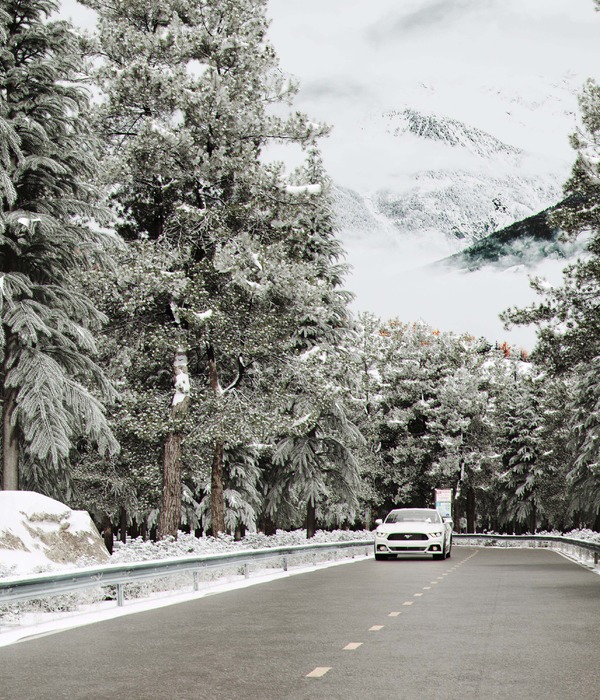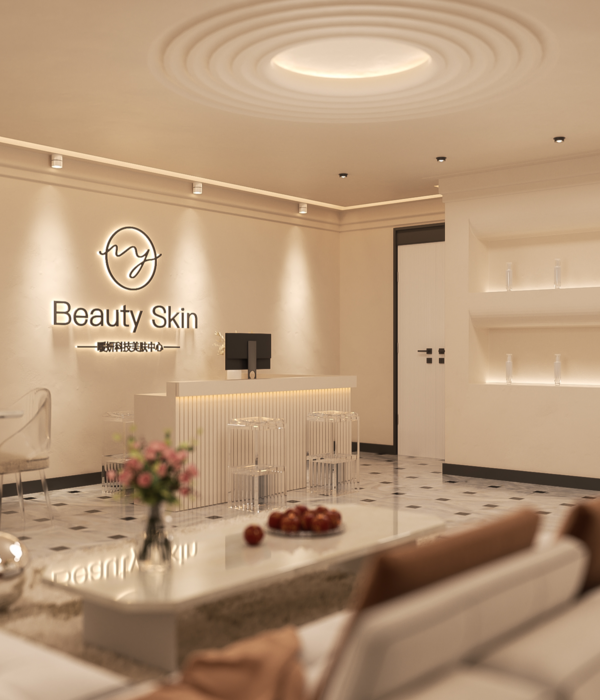- 项目名称:武汉良友红坊ADC艺术设计中心
- 建筑事务所:UAO瑞拓设计
- 项目完成年份:2019
- 主创建筑师:李涛
- 设计团队:UAO瑞拓设计
- 团队:胡炳盛,孔繁一,李龙,张杰铭,龙可成,晏罗谛,王纤惠
- 委托方:武汉良友红坊文化产业发展有限公司
- 园区规划设计:上海水石
- 园区景观设计:UAO瑞拓设计
本项目的前身是五栋建于上世纪六十年代和上世纪九十年代厂房建筑。该建筑处于总个园区的核心位置,改造后的功能为公共设计艺术中心。主要用途为展厅,用于举办各种艺术、设计类的展览活动。原有建筑是五栋连在一起的坡屋顶建筑,三栋建于1960年代,原有功能为仓库;结构形式为砖混结构,木桁架,红色瓦屋面,屋脊高度为7米;在1990年代,该建筑组转换为建材市场,在三栋建筑的中间空地,加建了两栋厂房,新建的砖柱贴着老仓库的柱子建设,屋顶为钢桁架结构,屋面为石棉瓦屋面,屋脊高度为9米。相邻建筑高差部分为新建建筑的天窗。
The predecessor of this project is five factory buildings built in 1960s and 1990s. The building is located in the core of the total park, and the transformed function is the public design art center. The main purpose is exhibition hall, which is used to hold all kinds of art and design exhibitions.The original building is a series of five sloping roof buildings, three of which were built in the 1960s, with the original function of warehouse; the structural form is brick concrete structure, wood truss, red tile roof, and the height of roof ridge is 7 meters; in the 1990s, the building group was transformed into a building materials market, and in the middle open space of the three buildings, two additional plants were built, and the new brick columns were pasted with the pillars of the old warehouse, with the roof Steel truss structure, asbestos tile roof, ridge height of 9 meters. The height difference between adjacent buildings is the skylight of new buildings.
▼艺术设计中心外观,exterior view of the art design center ©赵奕龙
建筑的正立面被设定为北侧横轴方向,主入口需从北侧的广场进入。广场景观也由UAO来设计,为配合广场上大舍设计的花草亭,UAO将原有的停放货车的园区广场混凝土路面进行了切割,切割出不规则的缝隙,并在缝隙里种植了草皮;既呼应了花草亭支撑结构的不规则块面,又保留了厂区历史的痕迹。
The facade of the building is set in the direction of the North horizontal axis, and the main entrance needs to enter from the square on the north side. The square landscape is also designed by UAO. In order to cooperate with the flower and grass Pavilion designed by the Atelier Deshaus on the square, UAO cut the original concrete pavement of the park square where trucks are parked, cut out irregular gaps, and planted turf in the gaps. It not only echoes the irregular block surface of the flower and grass Pavilion support structure, but also retains the traces of the plant history.
▼艺术设计中心外观,设有广场,建筑周围种有草皮,exterior view of the art design center with a square,the building is surrounded byturf©赵奕龙
花草亭的位置被安置在原有建筑的正中轴线上,新的ADC艺术设计中心建筑入口应从花草亭的广场进入,因此入口必须从较窄的横轴柱距进入;UAO的解决方案是在五个连排建筑的正中切开一个光轴:将中间两跨到三跨(8-12米)的屋顶打开,移除瓦屋面,保留木桁架(或钢桁架)。屋顶打开后,光线进入建筑内部,自然地形成了一个序列空间;这个序列空间被设定为类似拉斐尔名画《雅典学院》式的中轴艺术大道,它是主要的交通空间,顺势串联起两边的展厅,形成经典的展览建筑 “鱼骨”状平面布局。
中轴两侧的展厅分隔墙,使用拆下来的红砖砌筑成清水砖墙。中轴的局部的屋顶被打开,形成露天的中庭;而顶部的钢或木桁架结构被保留,白天桁架的光影会投射在主轴两侧的墙面上。
▼改造策略分析图,concept diagram ©瑞拓设计
▼爆炸轴测图,the exploded axon©瑞拓设计
The location of the Flower Pavilion is located on the central axis of the original building, and the entrance of the new ADC art design center building should be from the square of the Flower Pavilion, so the entrance must be from a narrow horizontal axis column spacing; the solution of UAO is to cut an optical axis in the middle of the five row buildings: open the middle two to three span (8-12m) roof, remove the tile roof, and retain the wood truss( Or steel truss). After the roof is opened, the light enters into the interior of the building, forming a sequence space naturally; this sequence space is set as the central axis art Avenue similar to Raphael’s famous painting “Athens College”, which is the main traffic space, connecting the exhibition halls on both sides, forming a classic Exhibition Building “fish bone” like plane layout.
The exhibition hall partition walls on both sides of the central axis are made of red bricks. The partial roof of the central axis is opened to form an open atrium; while the steel or wood truss structure at the top is reserved, and the light and shadow of the truss will be projected on the walls on both sides of the main axis during the day.
▼打开屋顶后的中轴艺术大道,白天桁架的光影会投射在主轴两侧的墙面上,the central axis art Avenue after removing the tile roof, the light and shadow of the truss will be projected on the walls on both sides of the main axis during the day ©赵奕龙
建筑主入口的设计原则是强调对比和并置:主入口用钢结构形成高耸的外形;其斜向的屋面造型,来源于Art的第一个字母A,这个想法来自于主创设计师李涛的思考偶得:最开始的想法是较为古典的对称造型,后来演变为方形造型,觉得太过正规,随将其改为斜边和直角的组合,最后形成A字。“A”字和外立面的橱窗造型D、C形成“Art Design Center”的首字母缩写,设计用波普的手法直接表达了建筑名称ADC的意思;虽简单,但直接有效。A是新植入的结构形态,它和原有保留的屋面、墙面形成了强烈年代和材质新旧对比。
The design principle of the main entrance of the building is to emphasize contrast and juxtaposition: the main entrance forms a high-rise shape with steel structure; its oblique roof shape comes from the first letter a of art. This idea comes from the thought of Li Tao, the chief designer.the first idea is a more ancient symmetrical shape, which later evolved into a square shape. I think it’s too formal, so I change it to a hypotenuse and a The combination of right angles finally forms a word. The word “a” and the window shapes D and C of the facade form the acronym of “art design center”. The design directly expresses the meaning of the building name ADC with pop’s method; although simple, it is direct and effective.The “A” is a newly implanted structural form, which forms a strong age and material contrast with the original retained roof and wall.
▼ADC字母组成的正立面,the main facade made of letters of A, D and C©赵奕龙
▼植入的新的A字与老的屋面和墙体的对比,the newly implanted structural form of A forms a strong age and material contrast with the original retained roof and wall©赵奕龙
▼斜向的屋面造型来源于Art的第一个字母A,the oblique roof shape comes from the first letter A of art©赵奕龙
"A"字顶部透过的玻璃天光,使黑色高耸空间不至于显得压抑。A字下作为整个建筑的前厅使用,内部空间较暗,中轴后续空间由于屋顶的移除,光线较亮,也吸引观者探索向前。
▼A字室内的高耸空间作为前厅,顶部透过的玻璃天光使黑色高耸空间不至于显得压抑,the interior space under the A-line acts as the vestibule of the whole building, the glass skylight at the top of “A” makes the black high-rise space not seem oppressive©赵奕龙
原有建筑的横轴柱距是4米,纵轴柱距为16米;当拆除建筑内部横隔墙后,从横轴看过去,空间内都是柱子,空间显得拥挤,但当从纵轴方向看过去,是开敞空间,一览无余。这个空间感很像西班牙科尔多瓦的大清真寺,柱网林立,一个方向柱距较小,但另外一个方向空间较大。建筑的外墙面和展厅局部内墙保留各个年代的装修痕迹不做任何处理。展厅内不设吊顶,露出桁架结构。新建做展示挂画的白墙面,设定在一个统一的水平高度。
两个展厅内被UAO利用桁架结构的特性,用钢索悬挂了两个轻钢几何盒子,外覆盖阳光板,一个为白色,一个为红色;阳光板材质较轻,半透明特性。盒子底部悬空,宛如漂浮在展厅中;它既起到分隔空间的作用,又不至于显得太堵,从而影响空间的整体和流动性。这种悬浮感,体现的是装置的轻,它与原有建筑的历史感也形成了一个对比。从入口的“A”字的钢结构的重量感,到中轴屋顶掀开后的自然,最后到展厅悬浮的盒子的轻量感;光线也从暗,到亮,再到适应展厅的半人工光线。这是设计师刻意制造的一种感知序列。
▼展厅1,用钢索悬挂了一个红色的轻钢盒子,the exhibition hall 1,hanginga redlight steel box with steel cables©赵奕龙
展厅1,展亭的局部墙体保留了历史的痕迹,the exhibition hall 1, the walls of the exhibition hall retain the decoration traces of various ages without any treatment©赵奕龙
▼展厅1,几何盒子外覆盖着红色的半透明阳光板,the exhibition hall 1, the light steel box is covered with translucent red transparent plates©赵奕龙
展厅1,盒子底部悬空,宛如漂浮在展厅中,the exhibition hall 1, the bottom of the box is suspended like floating in the exhibition hall©赵奕龙
The distance between the horizontal axis columns of the original building is 4m, and the distance between the vertical axis columns is 16m; when the internal horizontal partition wall of the building is removed, from the horizontal axis, there are columns in the space, and the space is crowded, but from the vertical axis, there is an open space, with a panoramic view. The sense of space is very similar to the Great Mosque in Cordoba, Spain. There are many columns. One direction has a smaller column spacing, but the other direction has a larger space.
In the two exhibition halls, UAO used the characteristics of truss structure to hang two light steel boxes with steel cables, covered with Transparent plate, one is white, the other is red; the Transparent plate are light and translucent. The bottom of the box is suspended like floating in the exhibition hall; it not only separates the space, but also does not appear too blocked, thus affecting the overall and liquidity of the space. This sense of suspension reflects the lightness of the installation, which also forms a contrast with the historical sense of the original building.
From the weight sense of the “A” steel structure at the entrance, to the nature after the central axis roof is lifted, and finally to the light sense of the suspended box in the exhibition hall; the light also changes from dark to light, and then to the semi artificial light adapted to the exhibition hall. This is a kind of perception sequence that the designer deliberately creates.
展厅2,设置悬浮的白色盒子,the exhibition hall 2 with a floating white box©赵奕龙
展厅2,展厅内不设吊顶,露出桁架结构,the exhibition hall 2,there is no ceiling in the exhibition hall, showing the truss structure©赵奕龙
展厅的功能被设定为举办多样性的活动,高达9M的展厅,除了常规的美术和雕塑等艺术类展览;也曾经被UAO用来举办“中荷城市再生工作营”,也被甲方举办过“城市再生实践展和论坛”,这符合这个建筑ADC——ART DESIGN CENTER的定位,正如最开始被设计师李涛设计在外立面的三个字母一样的醒目和明确。
The function of the exhibition hall is set to hold various activities, as high as 9m exhibition hall, in addition to conventional art and sculpture exhibitions; it has also been used by UAO to hold ” China – Netherland’s Urban Revolution Camp” and “Urban Revolution Practice Exhibition and Forum” held by clients, which is in line with the positioning of ADC (art design center) of the building, just as Li Tao, the designer, designed it at the beginning The three letters of the facade are equally striking and clear.
▼展厅3:雕塑展厅,the exhibition hall 3 for sculpture exhibitions©赵奕龙
展厅4,高窗采光,the exhibition hall4 with high side windows for natural light©赵奕龙
▼展厅4室内局部,partial interior view of the exhibition hall 4©赵奕龙
▼设计草图,the sketches©李涛
▼改造后首层平面图,ground floor plan after renovation©瑞拓设计
▼改造后夹层平面图,mezzanine floor plan after renovation©瑞拓设计
▼改造后屋顶平面图,roof planafter renovation©瑞拓设计
▼北立面图,northelevation©瑞拓设计
▼西立面图,west elevation©瑞拓设计
项目名称:武汉良友红坊ADC艺术设计中心
建筑事务所:UAO瑞拓设计
项目完成年份:2019
建筑面积:4891平米
项目地址:湖北武汉市汉口江岸区良友红坊艺术社区
主创建筑师:李涛
建筑中使用的三种材料以及对应的品牌:红砖——厂区回收红砖;地坪——水泥自流平;钢——宝武集团
摄影师:赵奕龙
设计团队:UAO瑞拓设计
主创设计师:李涛
团队:胡炳盛、孔繁一、李龙、张杰铭、龙可成、晏罗谛、王纤惠
委托方:武汉良友红坊文化产业发展有限公司
园区规划设计:上海水石
园区景观设计:UAO瑞拓设计
ADC建筑和室内设计:UAO瑞拓设计
ADC建筑施工图深化:武汉民用院
{{item.text_origin}}












